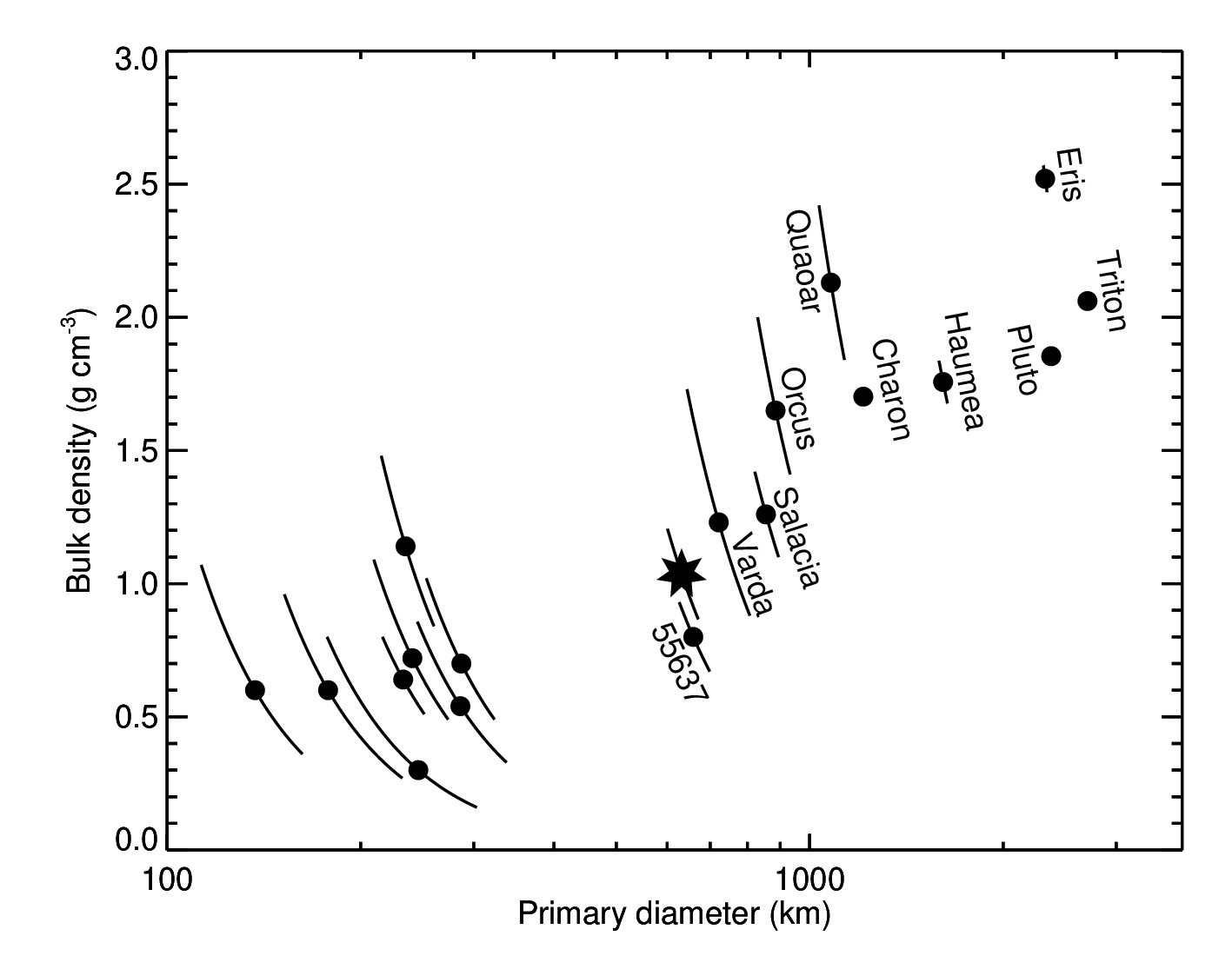
The mutual orbit, mass, and density of transneptunian binary Gǃkúnǁ'hòmdímà (229762 2007 UK126)
Published in 2019 in Icarus 334, 30-38.
W.M. Grundy1, K.S. Noll2, M.W. Buie3, S.D. Benecchi4, D. Ragozzine5, and H.G. Roe6
(1) Lowell Observatory, Flagstaff AZ.
(2) NASA Goddard Space Flight Center, Greenbelt MD.
(3) Southwest Research Institute, Boulder CO.
(4) Planetary Science Institute, Tucson AZ.
(5) Brigham Young University, Provo UT.
(6) Gemini Observatory/AURA, Santiago Chile.
Abstract
We present high spatial resolution images of the binary transneptunian object Gǃkúnǁ'hòmdímà (229762 2007 UK126) obtained with the Hubble Space Telescope and with the Keck observatory on Mauna Kea to determine the orbit of Gǃò'é ǃhú, the much smaller and redder satellite. Gǃò'é ǃhú orbits in a prograde sense, on a circular or near-circular orbit with a period of 11.3 days and a semimajor axis of 6000 km. Tidal evolution is expected to be slow, so it is likely that the system formed already in a low-eccentricity configuration, and possibly also with the orbit plane of the satellite in or close to the plane of Gǃkúnǁ'hòmdímà's equator. From the orbital parameters we can compute the system mass to be 1.4 × 1020 kg. Combined with estimates of the size of Gǃkúnǁ'hòmdímà from thermal observations and stellar occultations, we can estimate the bulk density as about 1 g cm-3. This low density is indicative of an ice-rich composition, unless there is substantial internal porosity. We consider the hypothesis that the composition is not unusually ice-rich compared with larger TNOs and comet nuclei, and instead the porosity is high, suggesting that mid-sized objects in the 400 to 1000 km diameter range mark the transition between small, porous objects and larger objects that have collapsed their internal void space as a result of their much higher internal pressures and temperatures.

Fig. 3. Densities and sizes of transneptunian bodies, with Gǃkúnǁ'hòmdímà indicated by a star. Other values are from Benecchi et al. (2010), Brown et al. (2010), Sicardy et al. (2011), Grundy et al. (2012), Stansberry et al. (2012), Brown (2013), Fornasier et al. (2013), Vilenius et al. (2012, 2014), Grundy et al. (2015), Brown and Butler (2017), McKinnon et al. (2017), and Ortiz et al. (2017).